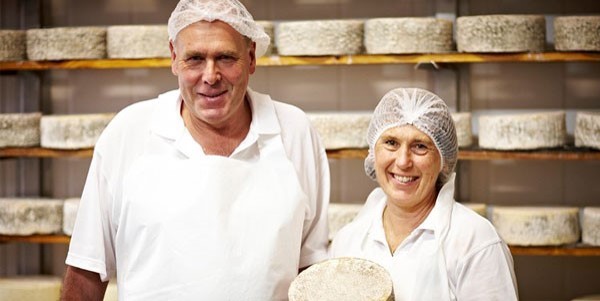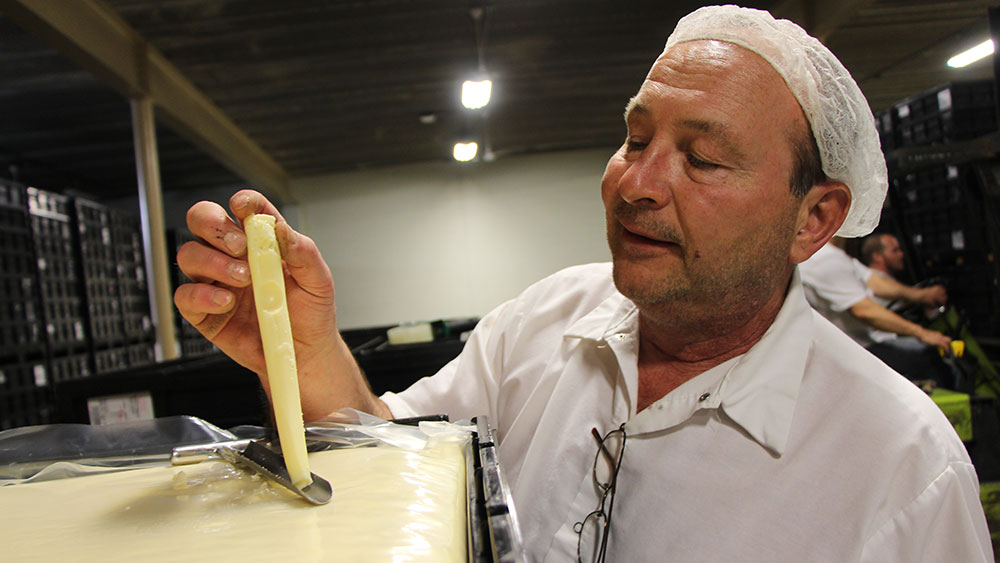Behind the Scenes with Cheese Makers Melbourne: Featuring Floridia Cheese
Behind the Scenes with Cheese Makers Melbourne: Featuring Floridia Cheese
Blog Article
Unlocking the Tricks of Artisanal Cheese Making: A Step-by-Step Do It Yourself Guide
In the world of cooking workmanship, artisanal cheese making stands as a testimony to the fragile equilibrium between tradition and development. As we begin on this journey to demystify the art of producing charming cheeses, we are faced with a tapestry of tricks and skills waiting to be deciphered.
Choosing the Right Milk
When embarking on the trip of artisanal cheese making, the choice of milk plays an essential role in determining the top quality and qualities of the last product. The kind of milk picked affects the flavor, appearance, and generally profile of the cheese.
When choosing milk for cheese making, it is necessary to consider the fat material. Higher fat web content in milk can lead to a creamier and richer cheese, while reduced fat content might cause a drier and firmer appearance. In addition, the source of the milk, whether from cows, goats, lamb, or buffalo, contributes unique tastes and qualities to the cheese (Floridia Cheese Thomastown). Each kind of milk brings its very own nuances, enabling a large range of cheese selections to be crafted based upon the chosen milk. Eventually, the option of milk is a basic decision that establishes the foundation for an effective artisanal cheese-making undertaking.
Culturing and Coagulating
To start the cheese-making procedure, the critical actions of culturing and coagulating need to be carefully executed to change milk into curds and whey. Culturing involves introducing useful germs to the milk, which after that starts the fermentation procedure. These bacteria transform lactose (milk sugar) into lactic acid, producing the acidic setting required for coagulation. The type of culture used can considerably impact the flavor, appearance, and ripening of the final cheese item.

The timing and temperature level control during culturing and coagulation are important variables that affect the final end result of the cheese. Correct execution of these actions is necessary to make certain the preferred appearance, taste, and consistency of the artisanal cheese being generated.
Draining Pipes and Pressing Curds
After the milk proteins have coagulated and the curds have actually been reduced to release whey, the following essential step in artisanal cheese making includes draining pipes and pressing the curds to accomplish the wanted structure and uniformity of the last cheese item. Draining is the procedure of separating the curds from the whey. This can be done by why not try this out moving the curds right into a cheesecloth-lined colander or mold and mildew and permitting the whey to drain off normally. The time for draining can differ depending upon the sort of cheese being made and the desired dampness content.
Pushing aids eliminate any remaining whey and compacts the curds to form a solid cheese wheel. Proper pushing and draining pipes are crucial actions that substantially influence the quality and characteristics of the artisanal cheese being produced.
Aging and Flavoring Techniques
Carrying out thorough aging and flavor methods is pivotal in improving the deepness and complexity of artisanal cheeses, elevating their taste profiles to exquisite levels of refinement and sophistication. Aging plays an important role in establishing the special flavors and textures that differentiate artisanal cheeses.
Seasoning techniques additionally contribute substantially to the final preference of artisanal cheeses. Cheesemakers might pick to introduce extra tastes by including components such as herbs, spices, or perhaps fruits right into the cheese throughout the production procedure. In addition, some cheeses are washed or scrubed with different fluids, such as salt water or alcohol, to enhance their flavors and structures.
Covering and Saving Cheeses

Conclusion
Finally, mastering the art of artisanal cheese making entails thoroughly picking the right milk, adhering to precise culturing and coagulating procedures, draining pipes and pressing curds successfully, and utilizing different aging and flavor techniques. By complying with these steps vigilantly and with interest to information, you can create your own scrumptious and unique cheeses in your home. Bear in mind to wrap and keep your cheeses appropriately to make certain optimum taste and structure growth. Happy cheese making!
Each kind of milk brings its own nuances, enabling for a large variety of cheese selections to be crafted based on the chosen milk.After the milk proteins Cheese Makers Melbourne have coagulated and the curds have actually been reduced to launch whey, the following crucial action in artisanal cheese making entails draining pipes and pushing the curds to achieve the desired texture and consistency of the last cheese item. The majority of cheeses need to be covered in wax paper or cheese paper to enable them to breathe while safeguarding them from drying out. For cheeses that need to proceed aging, such as bloomy rinds or cleaned peels, guarantee they are saved in a cool atmosphere like a cheese cavern or a fridge Your Domain Name established to the ideal temperature level. By paying focus to the wrapping and storage of artisanal cheeses, cheese makers and fanatics can protect the stability of these delicacies and totally enjoy their intricate tastes.
Report this page